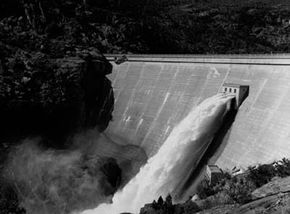The kidneys are shaped like, well, kidney beans. Or kidney-shape pools. You have two of them -- kidneys, not pools -- one on each side, just above the waist in the back of the abdomen. (In most people, the right kidney sits slightly lower than the left in order to make room for the liver above.)
Each kidney is about five inches long and weighs just four to six ounces. Yet these relatively small organs receive roughly 25 percent of the blood pumped from your heart. However, the kidneys quickly put all but a small fraction of that fluid back into circulation. In fact, while these hard-working organs process 200 quarts of blood per day, they only retain about 2 quarts, though they don't keep it for long.
Advertisement
The process goes like this: Kidneys receive blood from large vessels called renal arteries that branch from the aorta, the body's main artery, which delivers blood pumped from the heart. Once inside the kidney, the renal arteries divide into smaller blood vessels, which divide into even smaller blood vessels, and so on until they're just tiny capillaries that end in structures called nephrons.
There are about one million nephrons in each kidney. (Each nephron consists of two parts: clusters of capillaries called glomeruli, which are connected to tube-shape channels aptly known as tubules.) Since you have so many of them, nephrons must be pretty important, right? You bet -- nephrons filter excess, unnecessary, and downright dangerous stuff from the blood. Yes, it's true: Blood is full of junk. For example, when proteins in the body outlive their usefulness, they break down into waste products. When cells use food as a source of energy and to rebuild tissue, they toss out the leftovers. And it all ends up in the blood, like toxic sludge dumped into a river.
The nephrons act like mini water treatment plants, filtering out all this gunk. Nephrons also remove excess water from the blood. As this crude urine passes through the tubules, much of it returns to circulation. That's because it contains substances your body needs, including protein and electrolytes such as sodium, phosphorus, and potassium. (Electrolytes are molecules that control various processes in the body.)
The kidneys determine whether current levels of these chemicals in the blood need adjustment and reabsorb whatever is necessary through the renal veins to achieve a healthy balance. The waste-filled fluid left behind is plain old urine, which the kidneys ship south to be eliminated.
The kidneys do more than just control water quality and levels in the body, however. As a side job, these hard-working organs also release an array of hormones, enzymes, and other critical substances, including the following:
- Calcitriol, the hormone made from vitamin D that's necessary for healthy bones, among other things.
- Erythropoietin, a hormone that regulates the manufacture and distribution of red blood cells from bone marrow.
- Renin, an enzyme that the kidneys produce when blood pressure dips too low; it causes the blood to make angiotensin, which constricts blood vessels, causing blood pressure to stabilize. Angiotensin, meanwhile, also causes the adrenal gland to release a hormone called aldosterone, which acts on the tubules to regulate electrolytes.
To learn more about diabetes and how it can wreak havoc on your kidneys, visit the following links:
- Diabetes sufferers can develop diabetic kidney disease, which can lead to complications such as kidney failure. Find out how you and your doctor can spot the warning signs at the main Diabetic Kidney Disease page.
- The classic signs of diabetes are insatiable thirst and excessive urination. Visit the main Diabetes Symptoms page to learn more about the common symptoms of this dangerous ailment.
- Diabetes is a growing health problem in the United States, now affecting approximately 20.8 million Americans. Go to the main Diabetes page to learn about type 1 and type 2 diabetes.
- Your kidneys are responsible for regulating the composition of your blood, stimulating the production of red blood cells, maintaining your calcium levels, and regulating your blood pressure. Learn all about these essential organs in How Your Kidneys Work.
This information is solely for informational purposes. IT IS NOT INTENDED TO PROVIDE MEDICAL ADVICE. Neither the Editors of Consumer Guide (R), Publications International, Ltd., the author nor publisher take responsibility for any possible consequences from any treatment, procedure, exercise, dietary modification, action or application of medication which results from reading or following the information contained in this information. The publication of this information does not constitute the practice of medicine, and this information does not replace the advice of your physician or other health care provider. Before undertaking any course of treatment, the reader must seek the advice of their physician or other health care provider.
Advertisement
